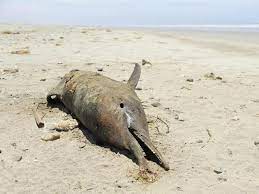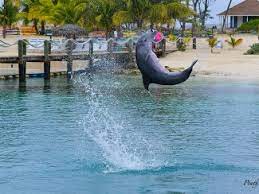India is a country blessed with a rich and diverse natural heritage, including its unique aquatic ecosystems. Among the remarkable creatures that inhabit its rivers, the Gangetic dolphin holds a special place. Declared as the national aquatic animal of India, the Gangetic dolphin, also known as the Ganges river dolphin. It symbolizes the importance of preserving our water bodies and the biodiversity they support.

- Habitat and Distribution: The Gangetic dolphin is primarily found in the freshwater rivers of the Indian subcontinent. It predominantly inhabits the Ganges and Brahmaputra river systems, along with their tributaries. These majestic creatures require clean and healthy river ecosystems to thrive, making them an indicator species for the overall health of the water bodies they inhabit.
- Unique Features: The Gangetic dolphin is known for its distinctive appearance and adaptation to its aquatic environment. It possesses a long and slender body, reaching lengths of up to 2.6 meters. Its snout is elongated and beak-like, filled with sharp teeth. Unlike other dolphins, the Gangetic dolphin’s eyes are poorly developed, as it relies mainly on echolocation to navigate and locate prey.
- Conservation Status and Threats: Despite its cultural and ecological significance, the Gangetic dolphin faces numerous threats to its survival. One of the primary challenges is habitat degradation and pollution caused by human activities. Industrial waste, agricultural runoff, and river pollution affect the water quality, making it challenging for the dolphins to find prey and navigate effectively. Additionally, dam construction and water diversion projects disrupt their natural habitats and obstruct their migratory patterns.

- Conservation Efforts: Recognizing the importance of preserving this iconic species, several conservation initiatives have been undertaken in India. The Gangetic Dolphin Sanctuary in Bihar and the Vikramshila Gangetic Dolphin Sanctuary in Bihar and West Bengal are dedicated protected areas established to safeguard the habitat of these dolphins. These efforts focus on habitat conservation, pollution control, and creating awareness among local communities about the importance of the Gangetic dolphin and the need for its protection.

Vikramshila Gangetic Dolphin Sanctuary - Role in Ecosystem: The Gangetic dolphin plays a crucial role in maintaining the ecological balance of river ecosystems. As a top predator, it helps regulate fish populations, thereby promoting healthy fisheries. Furthermore, its presence indicates a healthy and thriving river ecosystem, which benefits numerous other species dependent on the same habitat.
Conclusion: The Gangetic dolphin holds immense cultural, ecological, and scientific significance for India. Its designation as the national aquatic animal serves as a reminder of the need to protect our rivers and preserve their biodiversity.
By conserving the habitat of the Gangetic dolphin and ensuring the cleanliness and health of our rivers, we not only protect this magnificent creature but also safeguard the overall well-being of our aquatic ecosystems. It is our collective responsibility to work towards a future where the Gangetic dolphin and its fellow river inhabitants can thrive, contributing to the beauty and ecological balance of our nation.
Thanks for reading this article on National Aquatic Animal of India.
Important Links

